Expert’s Rating
Pros
- Great 200Mp main lens
- Superb 120W charging
- Excellent 120Hz display
- Solid performance
Cons
- Underwhelming software
- Disappointing ultrawide and macro cameras
Our Verdict
The Note 12 Pro+ is superb value for money, and it’s easy to ignore a couple of compromises when you’re essentially getting a flagship phone for under £500/€500. As long as Xiaomi’s Android skin isn’t a dealbreaker, that is.
Xiaomi makes some of the best budget and flagship phones around, but you shouldn’t ignore what the company is doing in the mid-range market.
Its Redmi sub-brand has existed there for a while, although the Note 12 Pro+ takes things to the next level. For just £449/€499, you get premium features such as a 200Mp camera, 120Hz OLED display and 120W charging.
Fortunately, all three are genuinely impressive, while the rest of the phone is good enough to compete with many flagships. Compromises are inevitable at this price point, but they shouldn’t be dealbreakers for most people.
Design & build
- Glass front and back
- Side-mounted fingerprint sensor
- 3.5mm headphone jack
The Note 12 Pro+ has a sleek, premium design which could easily pass for a device costing twice the price.
It starts with Xiaomi’s choice of materials: plastic on the sides, but glass on both the front and back. The latter is a pleasant surprise, as it’s by no means a standard feature on mid-range handsets. A matte coating limits the build-up of fingerprint smudges, allowing the phone to shimmer attractively as light hits it.
That’s particularly apparent on the ‘Iceberg Blue’ model you see in photos, but the effect on ‘Arctic White’ and ‘Obsidian Black’ versions is similar. While there’s no Gorilla Glass protection here, the back of the 12 Pro+ feels impressively durable and grippy. A clear silicone case is included in the box, but you might not need it.
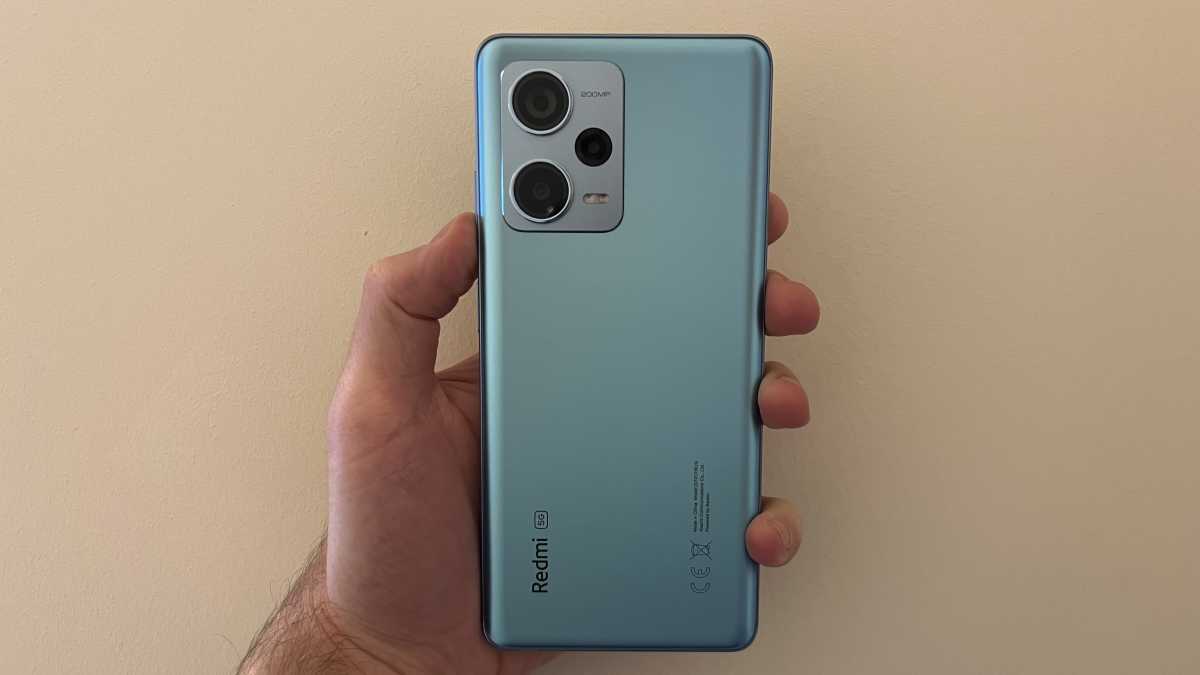
Anyron Copeman / Foundry
However, the IP53 rating is a bit of a disappointment. It protects against dust but only splashes of water, rather than the submersion afforded by IP68 on flagships.
Redmi branding and CE information are both visible on the back of the phone, but it’s the camera module that dominates. It houses three lenses and a flash, so the slight bump is easy to excuse. But while I wouldn’t call the camera module ugly, it’s far from the prettiest.
You’ll find one of the phone’s big compromises on one side, but it’s not the plastic used. Rather than an in-display fingerprint sensor, the 12 Pro+ has one built into the power button instead. It has a smaller target area, yet remains very reliable and tends to unlock the phone quicker.
An advanced vibration motor means the subtle haptic feedback you get here is excellent
This doesn’t feel like a downgrade at all, and I’d recommend using it over the less secure face unlock.
There’s even still a 3.5mm headphone jack, a real standout feature in 2023. If you still have great wired headphones, there’s no need to put up with a USB-C adapter here.
A detailed assessment of the display is included in the next section, but it’s worth mentioning the haptics here. An advanced vibration motor means the subtle haptic feedback you get here is excellent, whether it’s unlocking the phone, multitasking or reorganising apps. It really adds to the navigation experience.
Screen & speakers
- Excellent 6.67in OLED display
- Dynamic 120Hz refresh rate
- Decent stereo speakers
Let’s talk about that screen, then. It’s a large 6.67in OLED panel at 1080×2400. A higher resolution would’ve been nice, but only enthusiasts will be able to tell the difference between this and a 1440p panel.
In most scenarios, the 12 Pro+’s display is a joy to use. It delivers deep blacks and rich, vibrant colours that really pop. It’s accentuated by the recommended ‘Vivid’ colour scheme, but you can change this to ‘Saturated’ or ‘Standard’, or even create your own.
But for most people, that default mode is the one to go for. It means the phone excels at content consumption, whether it’s via social media or in movies and TV shows. For watching videos on your phone, the 12 Pro+ is one of the best in the business.
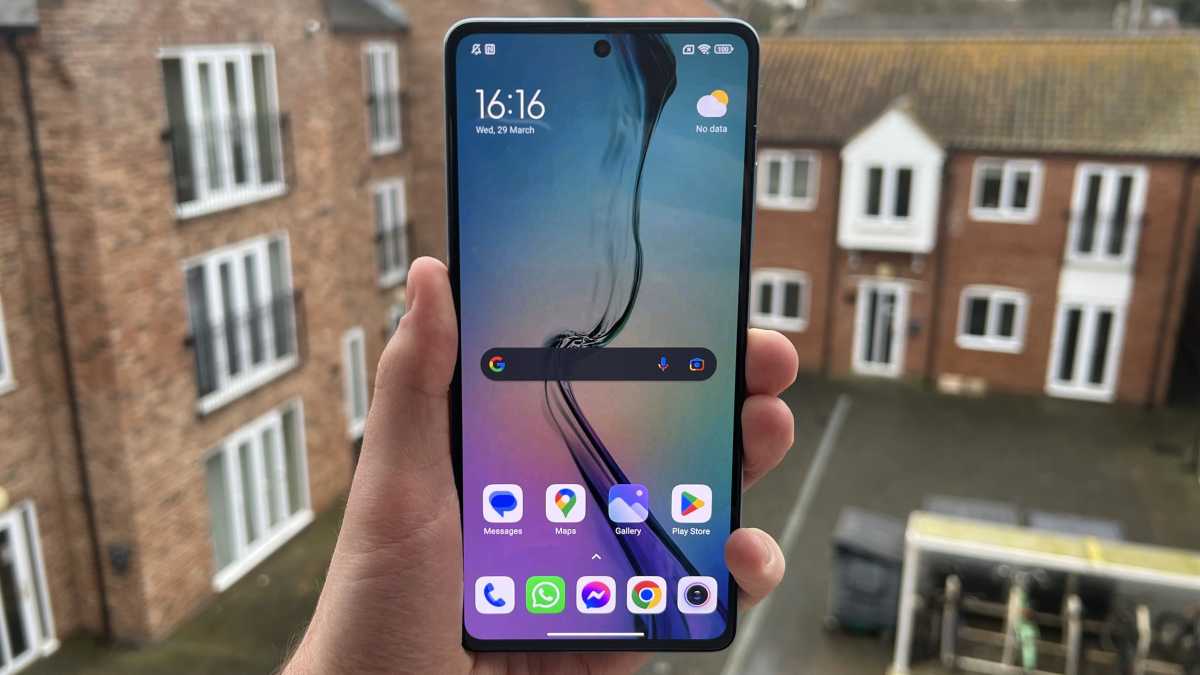
Anyron Copeman / Foundry
Navigating the phone is just as impressive, too, thanks to a 120Hz refresh rate. Scrolling and transitions are satisfyingly fluid, even on the default dynamic mode. This automatically switches between 60Hz and 120Hz, depending on what you’re doing (to help save battery life), but you can manually set it to either if you’d prefer.
Xiaomi claims up to 900 nits of peak brightness, although you’ll struggle to replicate that at home. But even at the 515 nits I recorded, the screen remains clearly visible in bright outdoor environments.
For watching videos on your phone, the 12 Pro+ is one of the best in the business
The display is curved at the edges, making it more comfortable to hold than many phones of this size. Slim bezels mean almost 87% of the front panel is screen, with a small hole punch selfie camera keeping disruption to a minimum.
Working in tandem with the display are stereo speakers, as the usual downward-firing grille combines with a second on the top of the phone. Not relying on the earpiece benefits sound quality, with a depth and detail to the audio that you don’t often get on phones.
The speakers get impressively loud, but high volumes are where you’ll notice the real lack of bass and treble. Distortion is avoided for the most part, though.
Specs & performance
- MediaTek Dimensity 1080 chip
- Very good all-round performance
- Limited to 256GB of storage
Rather than the Qualcomm chips we see in its flagships, Xiaomi continues to opt for MediaTek on many Redmi handsets. The Note 12 Pro+ is powered by the Dimensity 1080, a 5G chip that’s specifically designed for mid-range phones.
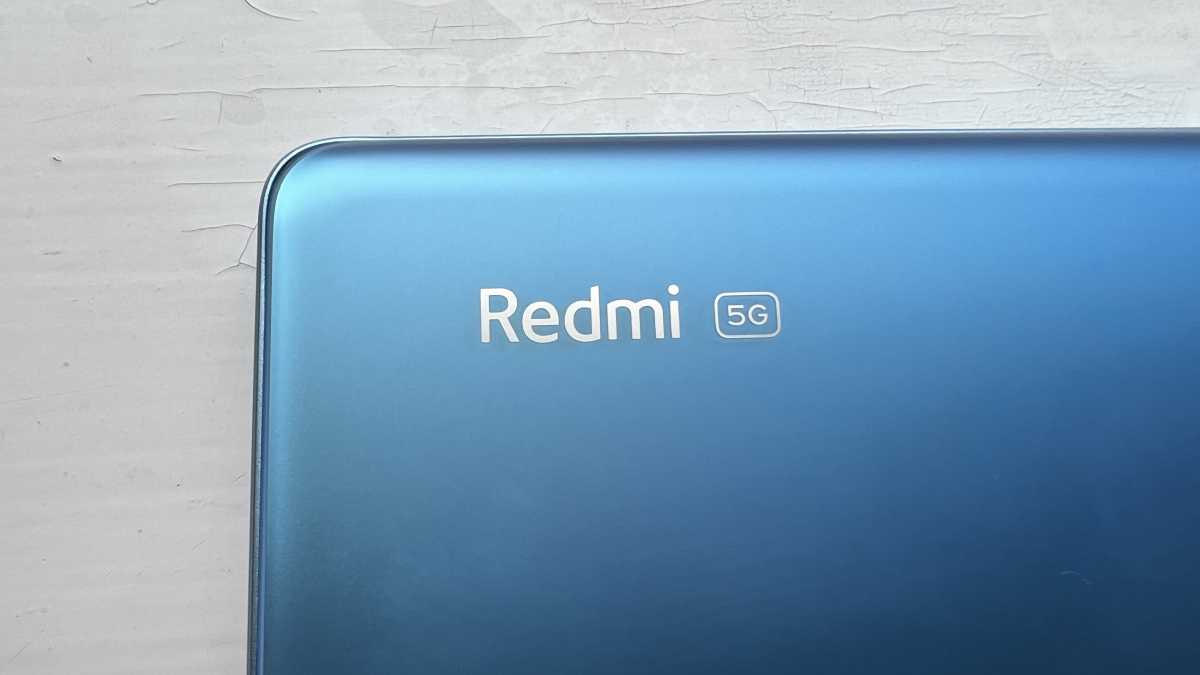
Anyron Copeman / Foundry
That suggests performance is nothing to write home about, but it turns out to be one of the phone’s key strengths. Even with just 8GB of RAM (the option for 12GB is exclusive to China), it excels across all everyday tasks.
My typical day includes plenty of web browsing, messages, taking photos and watching the occasional video. I also often quickly switch between them, making multitasking very important.
In all these scenarios and many more, the phone was easily able to keep up. It’s no surprise the Dimensity 1080 is used on more expensive handsets (such as the Xiaomi 12T Pro) – it’s a very capable chip. Alongside that 120Hz refresh rate, the 12 Pro+ delivers some of the best performance of any mid-range phone.
Only the most demanding workloads will push it to the limit. If you’re serious about mobile gaming or use other intensive apps on a regular basis, consider something more powerful. But for the vast majority of people, the 12 Pro+ has everything you need.
The 12 Pro+ delivers some of the best performance of any mid-range phone
Having said that, it’s not perfect. There were some stutters and hesitations during my testing time, plus the occasional app crash. But these are more likely to be related to software rather than hardware.
The benchmarks don’t provide a true reflection of the performance available here, although they show that the 12 Pro+ is far from the only powerful mid-range phone you can buy:
Regarding internal storage, 256GB is your only option. With no support for microSD expansion and around 25GB of that taken up with system files, power users may run close to capacity. But for most people, this won’t be an issue.
Alongside 5G, you also get Wi-Fi 6 and Bluetooth 5.2. Despite not being the absolute latest versions, they’re fine for almost every phone-related task you could think of.
Camera & video
- Impressive 200Mp main lens
- Disappointing 8Mp ultrawide and 2Mp macro
- Great 16Mp selfie camera
If you’re reading this review, the camera is probably the section you most want to know about. The Note 12 Pro+ is one of only a handful of phones to feature a 200Mp main lens, and it’s impressive to see this flagship feature make it to the mid-range.
So, how does it perform? The short answer is very well, albeit not significantly better than phones with a much lower megapixel count. Details and dynamic range are both excellent, while it handles contrast and shadows impressively.
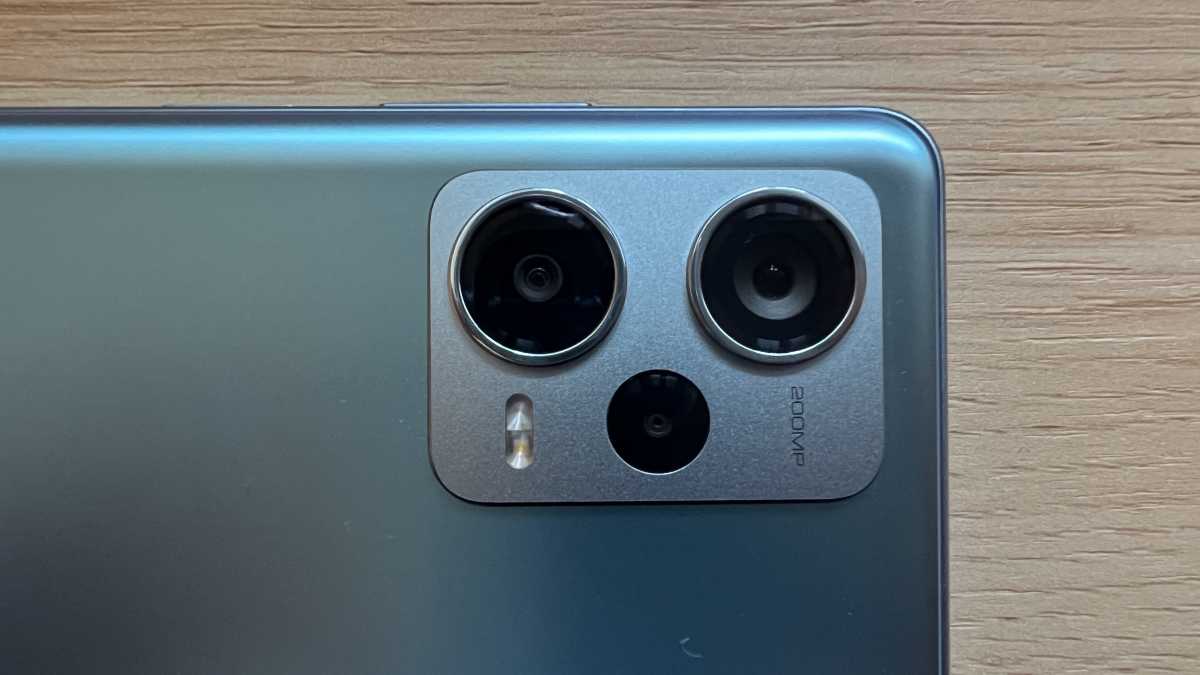
Anyron Copeman / Foundry
Despite most of my testing taking place on overcast days, exposure was also a pleasant surprise. Overcast skies add to the atmosphere of many shots, without ending up looking blown out and unrealistic. The main camera is a great point and shoot lens in a variety of scenarios.
Unlike the Xiaomi 13 and 13 Pro, there’s no option to switch between ‘Vibrant’ and ‘Authentic’ modes within the camera app. By default, the 200Mp lens definitely leans towards the latter, producing impressively true to life shots with little evidence of post-processing. If you really want something more saturated, turning on AI will usually do the trick.
I’m also very impressed with the way it handles low light. During sunset or on streets with lots of artificial lighting, you won’t even need to turn night mode on to get a great shot. But with it activated, there’s a nice boost to brightness and detail in darker environments.
The main camera is a great point and shoot lens in a variety of scenarios
However, it’s worth remembering that the 12 Pro+ doesn’t actually shoot in 200Mp by default. Instead, it uses a process called pixel binning to essentially combine 16 images into one higher quality 12.5Mp photo. This is primarily to avoid huge files clogging up your phone, but also because there’s very little difference in raw 200Mp stills – the improvements are minimal and insignificant.


Landscapes and street photography are a real strength of the main lens, so it’s disappointing to see such a drop-off when you move to the 8Mp ultrawide. It has a useful 120˚ field of view, but detail, exposure and colour accuracy are all compromised to the extent that I was reluctant to use it.
It’s a similar story for the 2Mp macro lens, although you can get some attractive close-up shots at times.
With no depth sensor, the phone relies on software for its portrait mode. However, the all-too-common issue of edge detection makes it frustrating to use, even if you can adjust the amount of background blur before or after you take the shot.
Portrait selfies using the 16Mp front-facing camera are much more impressive, while even regular shots do a good job with skin tones and exposure. Just make sure you turn off the pre-activated beauty mode for the best results.
The 12 Pro+ can capture video at up to 4K 30fps, but the default 1080p at 30fps offers plenty of detail for casual home videos or social media. Optical image stabilisation (OIS) on the main lens means it can cope with lots of movement, too.
Battery & charging
- 5000mAh battery
- Comfortably lasts a full day
- Super-fast 120W charging
The Redmi Note 12 Pro+ has a 5,000mAh battery. That’s a fairly standard capacity for a modern smartphone, and it means battery life is solid, but nothing spectacular.
The 12 Pro+ can usually last a full day with charge to spare
With the brightness set to 200 nits, I recorded exactly 11 hours on PCMark’s battery test. That aims to reflect real-world usage by simulating common tasks, although you’ll struggle to get anything close in terms of actual screen on time.
Even so, the 12 Pro+ can usually last a full day with charge to spare. Even on those days where you’re using GPS, taking lots of photos and keeping brightness high, you shouldn’t need to connect to the power until later in the day.
Gaming is perhaps the only exception to this rule, where a few hours running a demanding game will deplete the battery much more quickly.
But with some of the fastest charging around, running low on battery is much less of a concern. The 120W adapter included in the box doesn’t quite hit Xiaomi’s claims of a full battery in 19 minutes, but you can hit 58% in 15 minutes and 100% before half an hour has passed. Most people will be able to plug in their phone when they wake up and have it fully charged long before needing to leave home.
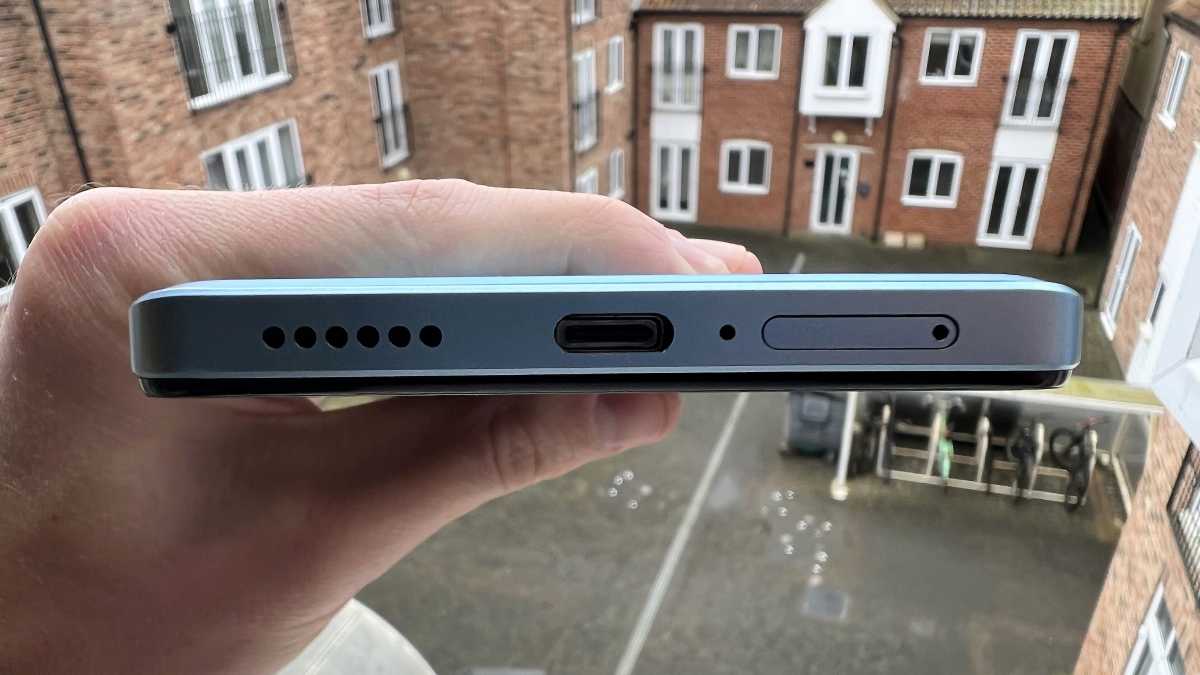
Anyron Copeman / Foundry
There’s no wireless charging, but I’d much rather have the fast wired version.
Software & updates
- MIUI 14 over Android 13
- Underwhelming but usable software
- Will get three Android version…
